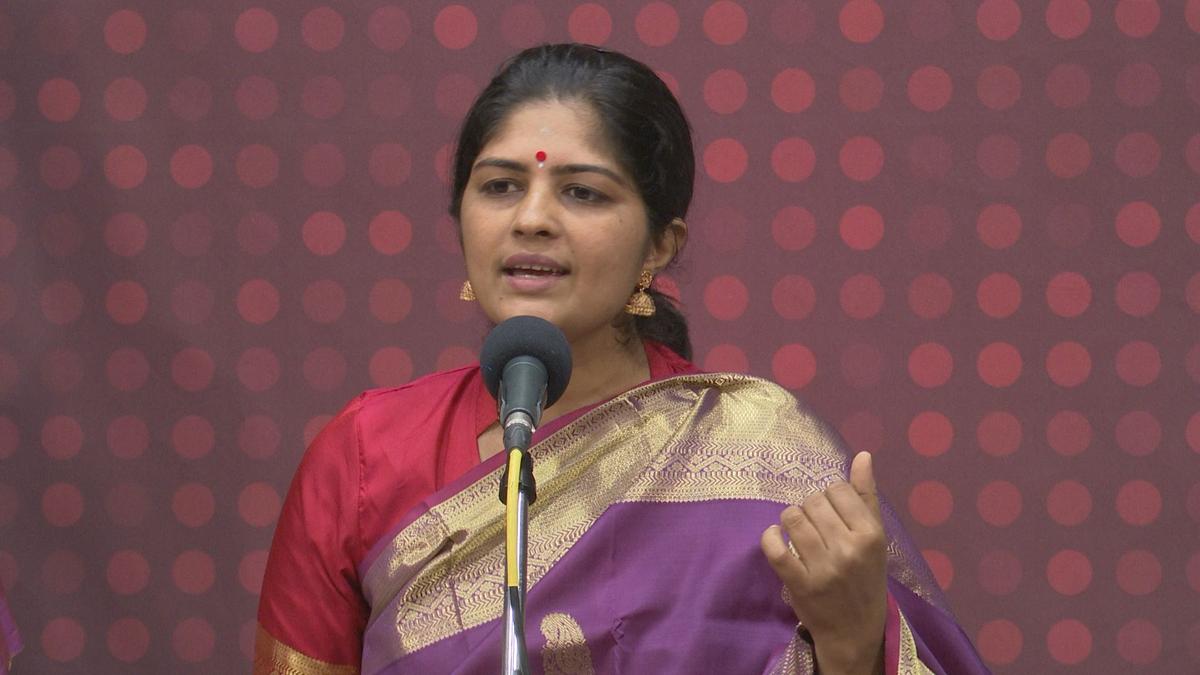
Sai Prarthana and Kashyap Mahesh highlight the richness of Tamil literature in Carnatic music
The Hindu
Showcasing the beauty of Tamil
Put together, Prarthana Sai Narasimhan and R. Kashyap Mahesh presented 21 compositions in their concerts spanning two hours each. It highlighted the richness of Tamil literature in Carnatic music, yet did not explore its deeper musical possibilities. Never serving dull moments, but neither keen to push the envelope, both the vocalists sought to showcase the charm of orthodoxy, regaling audiences at the ongoing Chitirai Isai Vizha 2024 under the aegis of Mudhra in association with Nalli.
At successive weekends of the month-long festival of Tamil compositions, Prarthana and Kashyap did, however, chip in refreshing elements. By including works from the fifth-eighth centuries to those who lived as recently as till the last decade, their kutcheris underscored the continued contribution of the ancient language to south Indian classical music. Be it the Divya Prabandham by the Azhwars, whose verses are one-and-a-half millennium old, or a varnam by scholar T.K. Govinda Rao (1929-2011), the pieces reinforced a constant Tamil flow into the stream.
In fact, Prarthana began her presentation with TKG’s ‘Aanai mugane’ in Sarasangi. While this 27th parent scale rarely functions as a starter, the singer wound up the piece with her own solfa sequences beyond the set chittaswaras. Violinist Shertalai Sivakumar couldn’t tune in easily to this extemporaneous presentation, even as K. Arun Prakash (mridangam) and Sai Subramaniam (morsing) laid the track fairly well.
As if in a hangover of TKG’s unhurried Musiri school, the ensuing Saveri composition assumed a pace that was lesser than usual. ‘Muruga muruga’ (Periasamy Thooran), too, concluded with kalpanaswaras, which straightaway stemmed from the second speed. Papanasam Sivan’s songs were rendered back-to-back — ‘Kumarantazh’ (Yadukulakamboji) and ‘Senthil andavan’ (Karaharapriya). The second was the sub-main, bracketed by a frills-fuelled alapana and post-niraval swaraprastara that culminated with zigzags encapsulating the spirit of the melakarta raga.
Gopalakrishna Bharatiyar’s ‘Enneramum’ (Devagandhari) was the filler ahead of the 50-minute main package in Mohanam. Sivakumar’s solo response was proportionate to the vocalist’s five-minute alapana, while Arun Prakash’s measured beats escorted ‘Kapali’ (Papanasam) into the anupallavi, guiding an amused Sai Subramaniam. The swara sequences revelled in the raga’s typical bubbliness, capped by a kanakku-laden finish. The following tani avartanam, too, bore geometry.
Suriya, next, came up with a welcome raga, with ‘Narahari vesha’ (Rukmini Ramani). Tarangambadi Panchanada Iyer’s ‘Arabhimanam malika’ spelt out a dozen ragas before Papanasam’s ‘Ennatavam’ in Kapi. ‘Vandinam muralum’ in Thodi (Thondaradippodi Azhwar) was the swansong.
Prarthana, trained by Mani Krishnaswami and Chingleput Ranganathan, resorts to sounding sweet without being all that sturdy. The resultant non-aggression is, coincidentally, a trait she shares with Kashyap, moulded chiefly under the legendary T.V. Gopalakrishnan. Both the vocalists showed a penchant for patterned kalpanaswara, never going overboard with it all the same.













